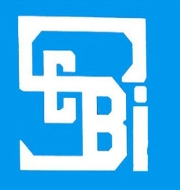SEBI tightens disclosure and review norms for credit rating agencies
Securities and Exchange Board of India (SEBI) has tightened disclosure standards for credit rating agencies (CRAs) while assigning ratings to debt instruments. It has ordered CRAs to analyse deterioration in liquidity conditions of issuer, while monitoring its repayment schedules and taking into account any asset-liability mismatches.
Credit Rating Agency
It is organization that gives rating to debtors or borrowers (government, companies etc) on the basis of their ability to pay back their principal loan and interest on time. It gives an idea of the probability of committing a default by them on debt and other credit related instruments.
It gives ratings only to the organizations and not individual customers for whom separate credit score is released. It help investors, customers etc to get an overall idea of the strength and stability of an organization.
Credit Rating is not based on mathematical formulas instead CRA use their judgment and experience in determining what public and private information. Currently there are six credit rating agencies in India which are registered under SEBI namely-CRISIL, ICRA, CARE, SMERA, Fitch India, ONICRA.
SEBI Revised standards
CRAs should disclose parameters such as liquid investments or cash balances, access to any unutilised credit lines and adequacy of cash flows in a specific section on liquidity. For reviewing rating criteria CRAs need to assess inter-linkages of holding company and subsidiaries, holding company’s liquidity, financial flexibility and support to the subsidiaries.
For monitoring of repayment schedules, CRAs need to analyse deterioration in liquidity conditions of issuer and also take into account any asset-liability mismatch. For reviewing material events, CRAs may treat sharp deviations in bond spreads of debt instruments vis-à-vis relevant benchmark yield as a material event.
CRAs should publish information about historical average rating transition rates across various rating categories, for investors to understand historical performance of ratings assigned by CRAs.
Background
Recently rating agencies had were in spotlight following crisis at Infrastructure Leasing & Financial Services Ltd (IL&FS) and its group entities. Mutual fund houses were caught unaware as major CRAs in August 2018 started to cut ratings from high investment grade to default or junk. The agencies faced criticism that they had failed to see financial troubles in IL&FS and adjust its rating of IL&FS when its debt jumped by 44% at end of March 2015. This prompted SEBI to review rating standards and whether there is need for increased accountability, and insist on more disclosures.
Month: Current Affairs - November, 2018


